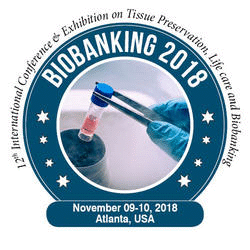
Pasquale De Blasio
ISENET, Italy
Title: Tissue microarray and quantitative digital pathology for research and diagnostic applications
Biography
Biography: Pasquale De Blasio
Abstract
Tissue microarrays (TMAs) and quantitative digital pathology (QDP), represent powerful tools for the identif cation and validation of molecular targets with clinical significance, and offer researchers many advantages including (a) power to analyze multiple clinical specimens or subjects on a single slide; (b) improved ability to make direct sample-to-sample comparisons by eliminating experimental variability associated with staining procedures; (c) reduced costs for antibodies and immunohistochemical reagents; (d) effi cient use of laboratory resources with reduced time required for slide processing; (e) conservation of precious clinical specimens. QDP analysis software is revolutionizing the interrogation of tissue microarrays (TMAs) during the study of complex diseases. These tools enable the automatic detection and analysis of tissue cores well beyond one or two biomarkers, furthering the quality and quantity of information attainable through a single experiment. TMA and QDP, is a platform for (a) “high-throughput pathology”, which combines tens to hundreds of Multiple samples (FFPE or frozen tissues) arranged in an organized fashion into a single paraffin block and analyzed by QDP SW analysis singularly; (b) “high-throughput in situ proteomics”, with retained histomorphology, cell specificity using new antibodies and subcellular localization, and protein quantification. TMA is also becoming an essential tool also in Biobanks by establishing “TMA core facilities” able to supply high quality and well annotated TMA’s to researchers and industries for (i) Basic research: to validate and verify gene expression data; (ii) Translational research: Diagnostic, Prognostic and Therapeutic markers, Response to therapy; (iii) Query signaling pathways and Drug discovery. CLMA’s (Cell Line Macro Arrays) are also used in stem cell research as fast and low cost “high-throughput platform” to screen for bona fi de iPS clones and study 3D Organoids/spheroids.

